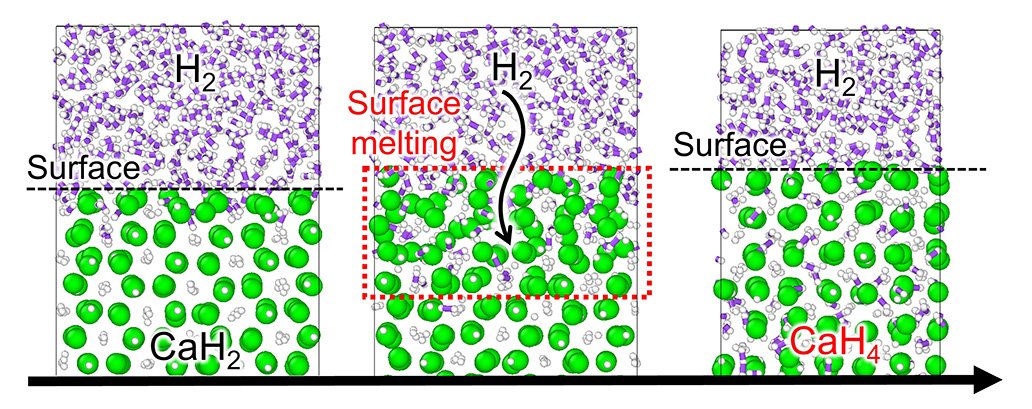Superhydrides are materials that can store significantly more hydrogen than conventional hydrides. Superhydrides present a highly promising option to conveniently store hydrogen fuels that serve as a clean, next-generation fuel source.
To help achieve this, researchers successfully reproduced the high-pressure synthesis reaction of superhydrides using a machine learning model. This transformative development in materials science paves the way for the precise control of superhydrides and serves as a pioneering example of using machine learning to predict unknown chemical reaction pathways.
The findings were published in Proceedings of the National Academy of Sciences (PNAS) on May 29, 2025.
The ability of superhydrides to incorporate exceptionally large amounts of hydrogen holds great promise for applications such as hydrogen storage and superconducting materials used in maglev trains and quantum computing. However, their synthesis requires extremely high pressures - on the order of tens of gigapascals (GPa) - making the reactions difficult to control.
"To give an example of how finicky these reactions are, the synthesis of calcium superhydride (CaH6), which contains hydrogen at a 1:6 ratio, took a decade to achieve from initial structural prediction," remarks Shin-ichi Orimo of Advanced Institute for Materials Research (WPI-AIMR) (also affiliated with the Institute for Materials Research).
Since conventional techniques like thermal analysis are limited under high pressure, a lack of understanding of the reaction processes has been a major bottleneck in developing superhydrides. Providing a theoretical framework to guide their synthesis is not only a key challenge in fundamental research, but also a critical step toward realizing a carbon-neutral society.

In this study, a team led by Assistant Professor Ryuhei Sato of the Graduate School of Engineering at the University of Tokyo, in collaboration with Professor Shin-ichi Orimo and Professor Hao Li from the WPI-AIMR at Tohoku University, and Professor Chris Pickard from the University of Cambridge constructed a machine learning model, the machine learning potential, trained on existing data (first principle calculations) for hydrogen and known calcium hydrides. Simulations using this model revealed a unique reaction pathway in which the surface of calcium hydride (CaH2) melts to absorb hydrogen molecules under high temperature and pressure, and eventually solidifies into bulk calcium superhydride (CaH4).
The reaction pathway clarified by this work - surface melting driven by pressure and molecular interaction, followed by the hydrogen absorption and solidification - represents a common mechanism in high-pressure hydrogen chemistry. It deepens our understanding of high-pressure physico-chemical processes and highlights the role of easily computable material properties (such as melting points) in determining reaction conditions. These insights may contribute to superhydride synthesis strategies that make them much easier to develop.
"The study establishes a new frontier for machine learning by demonstrating its ability to predict previously unknown chemical reaction pathways, further advancing the field of materials science," says Orimo.
- Publication Details:
Title: Surface Melting-Driven Hydrogen Absorption for High-Pressure Polyhydride Synthesis
Authors: Ryuhei Sato, Lewis J. Conway, Di Zhang, Chris J. Pickard, Kazuto Akagi, Kartik Sau, Hao Li, Shin-ichi Orimo
Journal: Proceedings of the National Academy of Sciences (PNAS)






